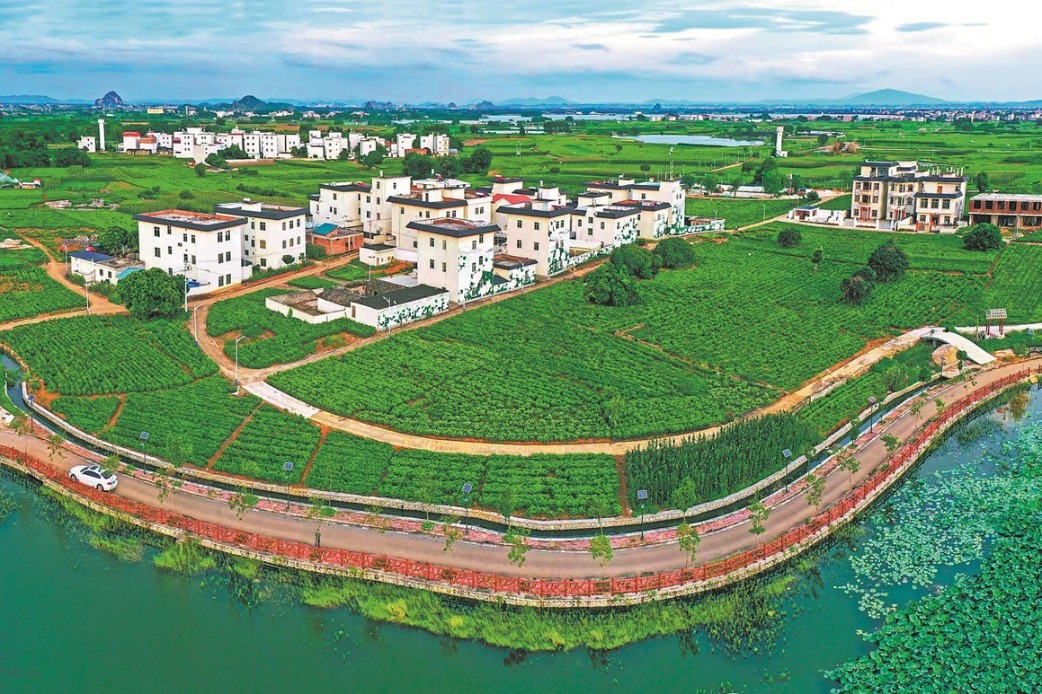Urbanization to be major growth driver


Party, State Council plan looks toward expanding domestic consumption
China is looking to accelerate urbanization as part of its broader efforts to boost domestic consumption amid rising protectionism in the global trade arena.
The strategy has been laid out in a set of measures aimed at expanding domestic demand between 2023 and 2035. The plan, formulated and issued by the Communist Party of China Central Committee and the State Council, was released to the public on Dec 14.
The document describes urbanization as a crucial avenue for raising consumption and upgrading industry, and suggests it will work as a "major propeller" for growth.
The increased focus on generating more domestic consumption comes as Chinese pockets have grown deeper over the past few decades. The plan says the sales of new cars in the country has been leading the world for the past 13 years.
The shift — from development driven by investment and export to development driven by consumption — will also help make the most of the ultra-large size of the Chinese market. In addition, it will defend the country against the "complex and serious" external environment, such as rising protectionism and hegemony, and promote economic circulation and build a new development paradigm.
In a section focused on advancing "people-centered new urbanization", the plan says that the hukou, or household registration system, needs to be overhauled to help turn rural migrants into urban residents. Under the current urban-rural, two-track hukou system, healthcare, schooling and many other local public services are inaccessible to out-of-town people.
A people-centered approach means fostering new city clusters, investing in public services and healthcare in counties, and upgrading infrastructure in bigger cities, such as adding elevators to old apartment buildings as their residents age.
The measures singled out the Chengdu-Chongqing city cluster for emphasis, saying its construction will be pushed forward in the years to come.
China City News, a newspaper that focuses on urbanization issues, reported this month that 19 city clusters — the Chengdu-Chongqing cluster included — are housing three-quarters of China's urban residents on one-fourth of the country's land area and contributing 80 percent of the national GDP.
The less-wealthy rural regions are also being targeted for bolstering consumption. Central authorities noted that they will implement a "rural construction campaign" to improve the living environment there, but pledged to preserve the original look of villages that are rich in tradition and culture.
They plan to increase rural spending on cars, home appliances, furniture and home decoration materials, while developing e-commerce to help farm produce reach urban kitchens.
Industries such as rural homestays, leisure agriculture and tourism will be promoted to diversify economic models in rural areas.
The measures have called for a new relationship between industry and agriculture, and rural and urban areas. It means having a coordinated development mechanism in which industrial progress will work to promote agriculture, and urban booms will be utilized in return to advance rural prosperity.
Urbanization has been charging ahead across China in recent years, raising the rate of urbanization to 64.72 percent last year, according to the National Bureau of Statistics. There were 914 million urban residents by the end of 2022, up 12.05 million from a year ago.
By comparison, the rural population dropped 11.57 million to 498 million.
Zhang Fei, deputy director of the China Institute for Reform and Development, a think tank in Haikou, Hainan province, said that China is at a critical juncture in upgrading its consumption structure.
"Urbanization not only spurs the expansion of the consumption scale, but also helps accomplish a structural upgrade," he told China City News.
According to Zhang's estimates, China's per capita spending on services is likely to reach about 50 percent of the total expenditure by 2025, up from 44.2 percent last year.
- European students explore modern China through BFSU program
- From Belgium to studying Chinese medicine in Yunnan: I found my answer at the South Expo
- Shanghai Disneyland to open new immersive, interactive exhibition
- China's anti-drug efforts yield results, yet complex threats persist
- Shenzhou XX crew to conduct second spacewalk
- Annual science gathering set for Beijing next month





































